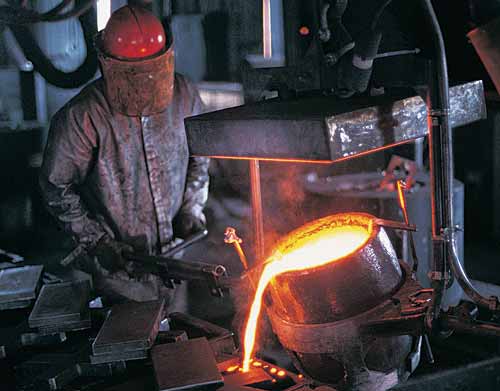Door Hardware Comes of Age
Basic Issues Guiding Hardware & Selection Choices
Typically, the driving force behind selecting different hardware is based on the necessary function, and the basic distinction is between indoor and outdoor applications. Most exterior doors lock, and in many cases the doors are larger in scale (taller, wider, heavier, and carry more hardware) than interior doors. This is especially true of entry doors. In order to hold larger and sturdier locking mechanisms, such as a mortise lock, selecting doors with larger stiles, which provide more room for the trim, is fundamental to having more options in hardware selection. The mortise lock, which integrates the locking and latching mechanisms into a single cartridge style lock, is inset within the width of the door and is set within the stile, the vertical structural member of the door.
Many interior doors contain a locking mechanism, but these tend to be smaller than those that secure homes. This varies based on residential and commercial applications. Another broad assumption is that interior doors are not required to meet all of the stringent impact codes, especially relating to hurricanes and high wind conditions that exterior doors are often subject to. This also varies with application, particularly for interior doors in commercial and hospitality settings.
Intensity of Use
High-traffic areas demand lock mechanisms with high tolerance for use. If doors require locking mechanisms, mortise locks are generally recommended. Fewer working parts will assure better operation if it fits the need. For example, in a busy location, a push/pull device, instead of a lever or knob lockset, is preferable. This is typical for doors that do not require latches.
Low-use doors can employ many different mechanisms because the function will not be tested as much as on high use doors. Nevertheless, design professionals should determine the potential use and regulations of the door before specifying hardware. Available options depend on whether the door will be used primarily for security or passage.
Basic Materials
The most common metals used in hardware trim are brass, stainless steel, aluminum, and bronze. Selecting the proper hardware material for a project depends on aesthetics, durability, and availability in all necessary lock functions and sizes for the project.
Brass, which is most commonly drop or hot forged, has been popular for many years. This metal begins in a rod form, is heated until it is malleable, and is then pressed with extreme pressure into a mold. This technique forges a product free of blemishes or pockmarks. Brass is often highly polished and then lacquered as a protective coat. Sometimes manufactures plate brass to look like other finishes such as nickel then lacquer coat again for protection. These lacquered finishes, like anything that is touched and used on a regular basis, can crack, chip or peel, thus allowing the base metal to tarnish with time.
|
Forging tends to result in more highly finished, polished, blemish-free surfaces. Reverting to casting techniques yields finer detail products with a warm texture. Many products can be poured using the sand casting process but the lost wax process can be used to make products that have finer details, while still retaining the desired texture of casting.
Iron, which is still very common in Europe, is also a forged metal. If untreated, iron will bleed or rust, depending on the environment. In most cases, iron is powder coated to retard this natural occurrence. The black finish for which iron is often associated is popular for a rustic or barn-like appearance.
Stainless steel is typically a high-end, modern, or contemporary choice for door hardware. Like forged brass, it has a very smooth, clean-lined surface, and has been a popular material used by Italian- and German-based companies. This metal is often used in coastal environments, where salt-water air tarnishes most metals quickly. When selecting stainless-steel hardware, it is important to research products to be sure the lock mechanisms will not corrode. Not all stainless-steel hardware is appropriate for coastal conditions. Price typically dictates quality of finish.










